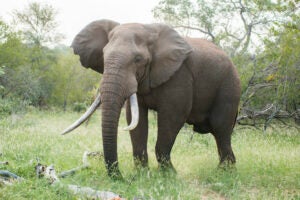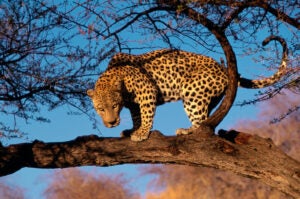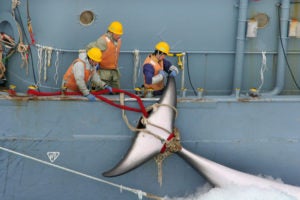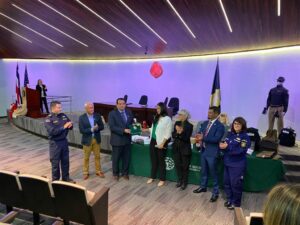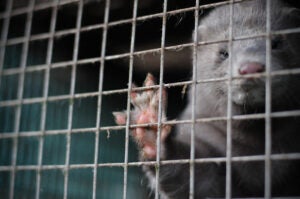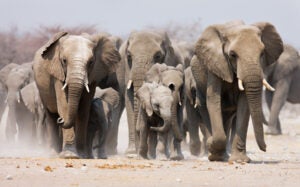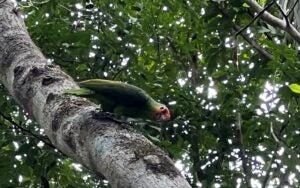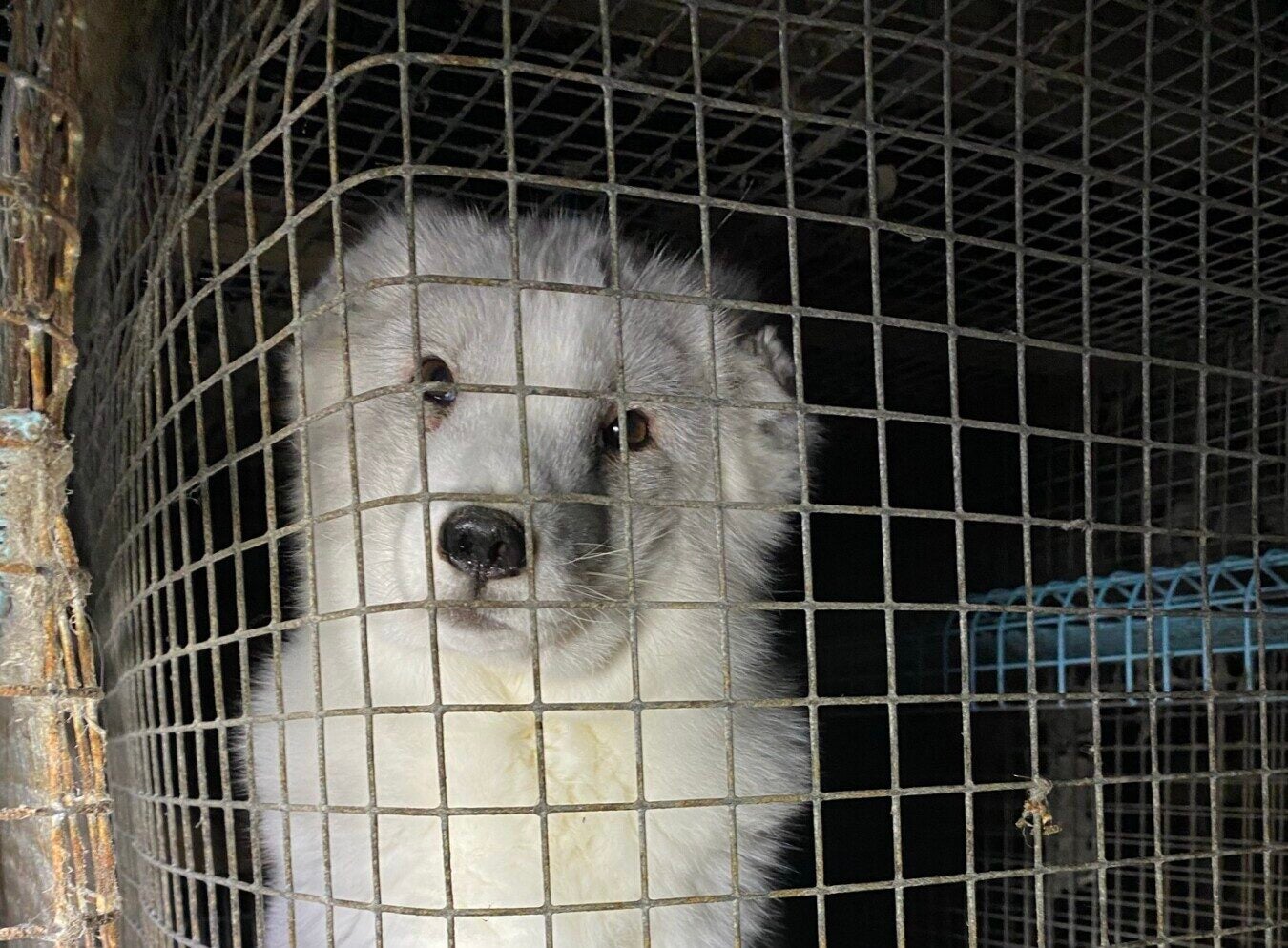
LONDON—The environmental impacts of mink, fox and raccoon dog fur production significantly exceed those of other materials used in fashion, including cotton and even polyester and acrylic used to make faux fur, according to a new report by carbon footprint experts at Foodsteps, commissioned by Humane Society International/UK, and reviewed by renowned sustainability expert Dr Isaac Emery. The report shows that the fur industry’s PR claim that fur is ‘the most environmentally friendly material available’, is inaccurate greenwashing and misleading to both consumers and retailers.
When compared to other materials in the report, per kilogram fur has the highest greenhouse gas emissions, which can include carbon dioxide, methane and nitrous oxide, with the carbon footprint of 1kg of mink fur found to be 31 times higher than that of cotton and 25 times higher than polyester. The three animal furs also scored worst for water consumption amongst all materials analysed―104 times higher than acrylic, 91 times higher than polyester and five times higher than cotton. Fur accessories such as fur trim on jacket hoods, and poms on hats and shoes, also come with a higher environmental price tag than their acrylic counterparts. For example, the study estimates that a raccoon dog fur bobble on a hat has a carbon footprint nearly 20 times higher than its acrylic faux fur bobble counterpart.
Around 100 million animals a year are used for fur globally, with around 10 million mink, foxes and raccoon dogs reared and killed on fur farms across Europe alone in 2021. HSI/UK’s report shows that if fur farming were banned across Europe, it would save nearly 300,000 tonnes of CO2-equivalent, the same as the annual carbon dioxide emissions of roughly 58,000 citizens in the UK. It would also save approximately 3,700 tonnes of water pollution and 11,800 tonnes of air emissions. Animals on fur farms also produce huge amounts of polluting excrement, and their fur pelts require large amounts of water, salt and a cocktail of chemicals like chromium and formaldehyde—listed as toxic carcinogens—to process into fashion items and stop them decomposing like dead skin and hair naturally would.
Humane Society International/UK leads the #FurFreeBritain campaign for a UK ban on the import and sale of fur. Claire Bass, HSI/UK’s senior director of campaigns and public affairs, says: “This analysis clearly shows that fur is one of the most environmentally damaging industries in the fashion world, its production creating a larger footprint than any of the other materials reviewed, including cotton and acrylic. Just like factory farming of animals for food, factory farming for fur places a heavy burden on the climate and environment, and keeping and feeding millions of carnivorous animals further amplifies the problem. Producing one kilogram of mink fur results in greenhouse gas emission seven times higher than one kilogram of beef and has 34 times the carbon footprint of chicken. In addition to the appalling suffering inflicted on animals on fur farms, this is a shockingly wasteful and damaging industry that is entirely out of synch with global sustainability goals. This report provides another compelling reason why the UK Government must ban the import and sale of fur, and all governments globally must act to end the fur trade.”
The fashion industry is estimated to be responsible for 2-8% of global carbon emissions and is a major polluter of water. Limiting fashion’s environmental footprint is therefore vital for meeting international climate change commitments, and HSI/UK believes its new report provides compelling evidence that the disproportionately large carbon and environmental footprint of the global fur trade should be eliminated, including by banning the import and sale of fur to the UK.
Fast facts from the report:
- The carbon footprint of 1kg of mink fur (309.91 kg CO2-eq) is 31 times higher than cotton, 26 times higher than acrylic, and 25 times higher than polyester. Raccoon dog fur and fox fur also have high carbon footprints, approximately 23 times worse for the climate than cotton, and 18 times worse for the climate than polyester.
- Mink fur produces air emissions 271 times higher than acrylic, 215 times higher than cotton and 150 times higher than polyester. Fox and raccoon dog fur produce air emissions roughly 104 times higher than that of acrylic, 83 times that of cotton and 57 times that of polyester.
- Almost 30,000 litres of water is required per kilogram of fur produced. The average water consumption of the three furs is 104 times higher than acrylic, 91 times higher than polyester and five times higher than cotton.
- The production of all three fur types has a staggering impact on water pollution; mink fur produces nearly 400 times the water pollution per kilogram of polyester, and on average all three furs are 100 times more water-polluting than cotton and 75 times more than acrylic.
With the increasing availability of innovative, bio-based, next generation materials, including faux fur made using plant-based ingredients, HSI predicts that non-animal fabrics will continue to become ever more environmentally friendly. The Faux Fur Institute in Paris has launched a roadmap for innovative ways to create faux fur, called SMARTFUR, based on the principles of the circular economy. In September 2019, Stella McCartney joined forces with DuPont in partnership with ECOPEL to launch KOBA® Fur Free Fur, the world’s first fully recyclable faux fur made using plant-based ingredients and recycled polyester. This was followed by the launch of BioFluff by founders Ashwariya Lahariya and Martin Stübler, the world’s first fully plant-based fur.
The HSI report uses data published by luxury (and now fur-free) French fashion group, Kering, as part of its Environment Profit & Loss data published to encourage a greater movement towards sustainability in the fashion industry. It looks at the impact of materials across the supply chain, including raw material production, processing, manufacturing, assembly and operations to retail. Although this fashion industry standard lifecycle analysis does not include end of life disposal, HSI/UK adds that all clothing in the fashion industry can ultimately end up in landfill, with items including animal fur being no exception.
HSI/UK’s Claire Bass adds: “A significant amount of animal fur used today appears as trim on disposable fashion items such as collars and hoods for parkas as well as poms on hats, gloves and shoes, all of which are made using a variety of synthetics and other materials and are just as likely to be landfilled as their faux fur equivalent. While all materials have a carbon footprint to some degree, our report shows just how large an environmental impact fur production has and dispels any myths about its green credentials. This analysis puts beyond doubt that the intensive farming of millions of fur-bearing animals each year, and the factory processing of their pelts, cannot reasonably be described as natural or sustainable, and is far more environmentally destructive than the fur trade wants consumers to believe. That’s simply too high a price to pay for a frivolous fur fashion item no-one needs.”
Fast facts about ending fur:
- Most of the world’s leading designers have introduced fur-free policies including all Kering’s six fashion brands—Saint Laurent, Brioni, Gucci, Alexander McQueen, Balenciaga and Bottega Veneta—as well as names including Valentino, Prada, Armani, Versace, Michael Kors, Jimmy Choo, DKNY, Burberry and Chanel.
- Despite banning fur farming in 2003 on moral grounds, the UK still imports and sells fur from countries including Finland and China, a double standard HSI/UK wants to see end. HMRC data shows that in 2022 the UK imported £41,970,308 of fur.
- A YouGov poll shows that 93% of Brits don’t wear fur and 77% support a sales ban.
- In addition to the UK, fur farming is also banned in Austria, Belgium, Bosnia-Herzegovina, Czech Republic, Croatia, Estonia, France, Ireland, Italy, Latvia, Luxembourg, Macedonia, Malta, the Netherlands, Norway, Serbia, Slovakia and Slovenia. Lithuania, Poland and Romania are currently considering fur farming bans.
- In the United States, the state of California banned fur sales in 2019. In total, 13 U.S. towns and cities have banned fur sales, Israel became the first country in the world to ban fur sales in 2021.
- Mink on more than 480 mink fur farms across 12 countries have been found infected with COVID-19, and the potential for zoonotic disease spread on fur farms has been acknowledged by the World Health Organisation. In October 2022, an outbreak of highly pathogenic avian influenza (H5N1) on a mink fur farm in Spain led influential virologists to call it “a warning bell” for the practice to be ended immediately.
Watch HSI’s New Animation About the Fur Trade’s Environmental Footprint
ENDS
Media contact: Sally Ivens: sivens@hsi.org

